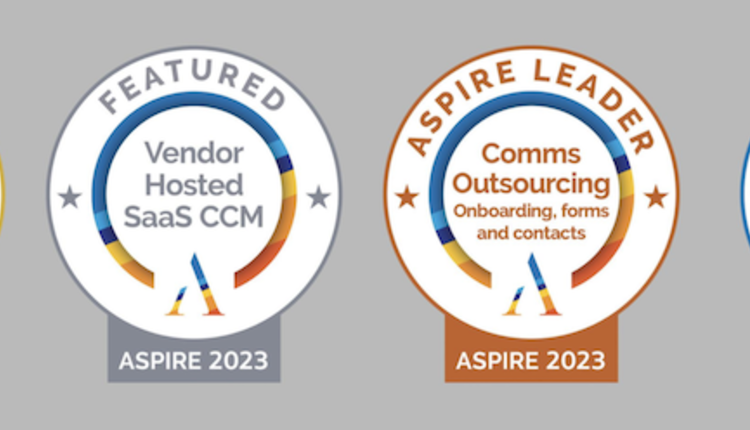
Image by: Design Pics/Ray Laskowitz, ©2016 Getty Images
Many enterprises, particularly those operating in regulated industries, have long-established customer communications teams and well-defined processes in place to ensure smooth delivery of critical communications. In order to protect against risk and to minimize cost, most have invested heavily in automated customer communications systems that are backed by rigorous governance and control processes.
In large organizations, however, the scale of the document inventory and the complexities of legacy infrastructure can mean that large teams are required to manage those communications. As a result, the typical customer communications function is rigid rather than agile, reactive instead of proactive and is driven by risk reduction or compliance concerns rather than being focused on innovation and business enablement.
While this may have worked in the past, it is not going to work in the future. Customer communications executives that do not evolve their customer communications function risk becoming marginalized and being seen as barriers rather than enablers of business growth. There are two key business drivers at work that will necessitate a fundamental rethink of how customer communications are managed: digital transformation and customer experience.

Digital Transformation Framework
What is digital transformation?
Digital transformation is about the application of digital technology to fundamentally change a company’s business model, operations and ways of engaging with its customers. A great example is Quicken Loans with its Rocket Mortgage offering. Quicken Loans, a US-based loan provider, has completely digitized and redeveloped its mortgage application offering, including back-office processes such as underwriting, building an easy-to-use website and mobile app that applicants can use to upload or link to all their details. As a result, accepted customers can now take out a fully underwritten mortgage in less than 10 minutes, compared to the weeks or even months it could take to complete a conventional process.
We are seeing similar innovative developments in other financial services areas and in other industries. Driven by digitization, big data, the Internet of Things and other emerging trends, the number of companies engaged in digital transformation can be expected to rise dramatically. Digital transformation enables businesses to fundamentally rethink their offerings and position themselves for growth in increasingly competitive markets.
Communications play a key role in this process. Digital transformation happens across the entire business, and the distinction between transactional and promotional communications is rapidly blurring and losing its significance. It is no surprise, therefore, that marketers, digital officers and customer experience officers are taking more and more ownership of critical communications. For them, any customer touchpoint is an opportunity to add value, and they are very much aware that it is four to five times more cost-effective to keep an existing customer than to acquire a new one. Creating a customer experience that is consistent throughout the customer journey is an overriding objective for today’s enterprise marketer.
We are seeing similar innovative developments in other financial services areas and in other industries. Driven by digitization, big data, the Internet of Things and other emerging trends, the number of companies engaged in digital transformation can be expected to rise dramatically. Digital transformation enables businesses to fundamentally rethink their offerings and position themselves for growth in increasingly competitive markets.
Communications play a key role in this process. Digital transformation happens across the entire business, and the distinction between transactional and promotional communications is rapidly blurring and losing its significance. It is no surprise, therefore, that marketers, digital officers and customer experience officers are taking more and more ownership of critical communications. For them, any customer touchpoint is an opportunity to add value, and they are very much aware that it is four to five times more cost-effective to keep an existing customer than to acquire a new one. Creating a customer experience that is consistent throughout the customer journey is an overriding objective for today’s enterprise marketer.
What is customer experience?
Customer experience is the perception that customers have of all their interactions with a brand. If a company sends relevant, authentic, easy-to-understand messages that are delivered through the customer’s channel of choice, it is much more likely to be seen as a business that delivers a good customer experience. From research, we know that customer experience leaders significantly outperform customer experience laggards in terms of business growth and stock return. Customer experience leaders have significantly more engaged customers, better retention rates, higher wallet share (via upselling or cross-selling) and less expensive service requirements than their peers.
Good customer experience involves engaging and simple-to-understand messaging, which is fully personalized in terms of channel, message, timing and location. It is also almost certain to be truly omni-channel, meaning that customers can start a conversation in one channel—responding to a printed communication, for example—and continue it seamlessly in another, by phone, email or online as they prefer. For this, a modern communications platform with centralized tracking is essential.
Good customer experience involves engaging and simple-to-understand messaging, which is fully personalized in terms of channel, message, timing and location. It is also almost certain to be truly omni-channel, meaning that customers can start a conversation in one channel—responding to a printed communication, for example—and continue it seamlessly in another, by phone, email or online as they prefer. For this, a modern communications platform with centralized tracking is essential.
What digital transformation and customer experience mean for customer communications
Digital transformation aims to place the customer front and center and to rethink how to best serve and interact with the customer by digitizing and realigning business processes. Customer experience is an essential component of this that cannot be seen in isolation from the broader digital transformation program; enterprises with an outdated customer communications approach will struggle to be seen as relevant.
This means that customer experience or digital transformation teams are going to develop various new propositions, including how to communicate with customers. Customer experience professionals require proactive support and certainly cannot afford to wait three months (a real market average) for a message template to be developed. The risk is that to meet their goals, they will migrate customer communications to digital teams, creating redundancy in processes and adding extra cost in maintenance and development. Often missed, but equally important, are the implications from the risk/compliance and governance/organizational perspectives, areas where customer communications teams typically have strong expertise and can make a difference.
This means that customer experience or digital transformation teams are going to develop various new propositions, including how to communicate with customers. Customer experience professionals require proactive support and certainly cannot afford to wait three months (a real market average) for a message template to be developed. The risk is that to meet their goals, they will migrate customer communications to digital teams, creating redundancy in processes and adding extra cost in maintenance and development. Often missed, but equally important, are the implications from the risk/compliance and governance/organizational perspectives, areas where customer communications teams typically have strong expertise and can make a difference.
What to do next?
For customer communications professionals, it is essential to get ready for the changes that are coming. There are three main steps:
1. Get educated on the changes that are happening in the marketplace. Attend tradeshows, customer events or vendor technology briefings as these are excellent ways to get—and stay—up to date. The next five years will likely see more changes in customer communications management than we have seen in the last 10.
2. Review your customer communications function and ask yourself to what extent it can really help drive the organization forward: Do customer experience professionals see you as a trusted advisor that can help them realize their communication goals, or do they see you as an obstacle to work around?
3. Check that you have a communications technology platform in place that enables omni-channel communications with centralized tracking that empowers business users to own their communications and which is backed by the right level of governance. If you don’t, it may make sense to carry out an audit or bring in outside expertise to help you transform your own functional area before you can help other parts of the organization with their digital transformation goals.
Don’t miss Kaspar Roos’ sessions “From Product-Focused to Customer-Focused: Collaborating Instead of Competing for Innovation” at the DOCUMENT Strategy Forum on May 10, 2016 at 1:00PM - 1:50pm and “The Customer Experience Journey (Part 3): Building 3D Personalization” on May 11, 2016 at 9:30am - 10:20am.
Don’t miss Kaspar Roos’ sessions “From Product-Focused to Customer-Focused: Collaborating Instead of Competing for Innovation” at the DOCUMENT Strategy Forum on May 10, 2016 at 1:00PM - 1:50pm and “The Customer Experience Journey (Part 3): Building 3D Personalization” on May 11, 2016 at 9:30am - 10:20am.
Kaspar Roos is the founder and CEO of Aspire Customer Communications Services, an international technology advisory firm specializing in customer communications transformation and customer engagement optimization. Before starting Aspire, he ran InfoTrends’ global production workflow and customer communications advisory service. Follow him on Twitter @kasparroos.






















